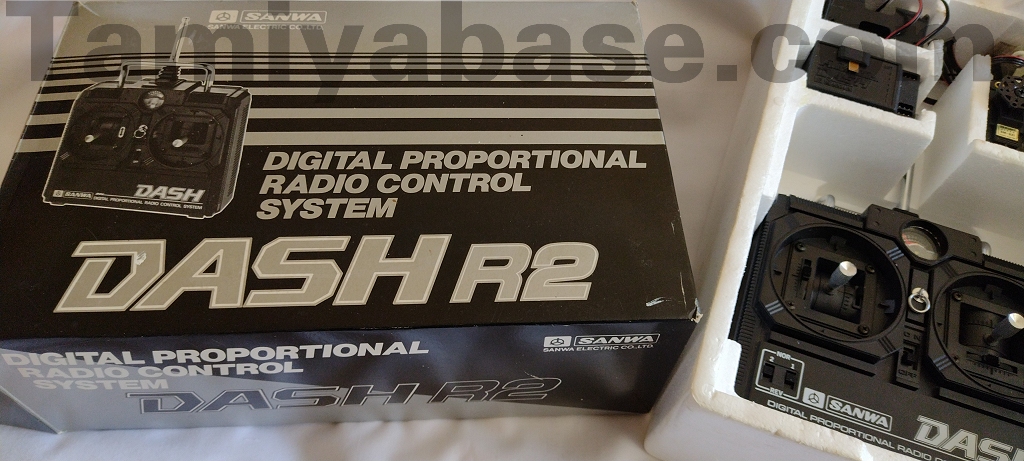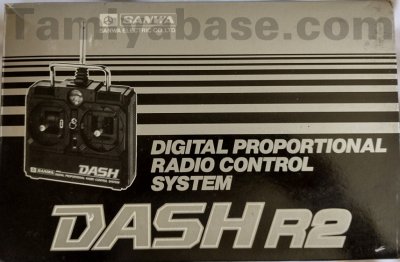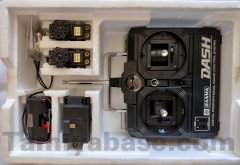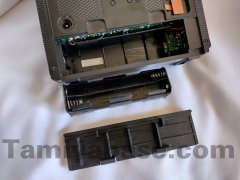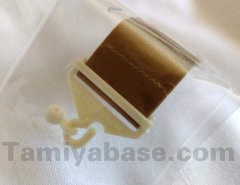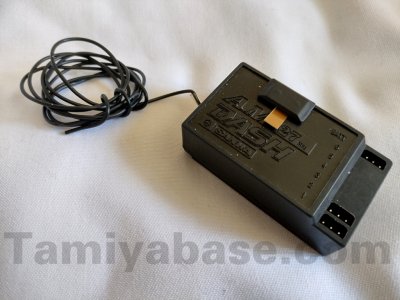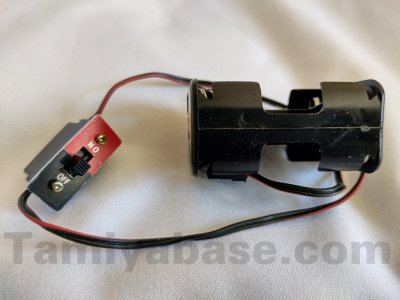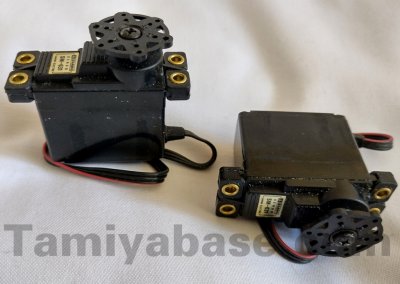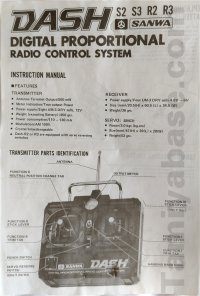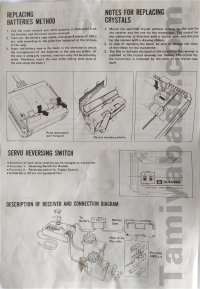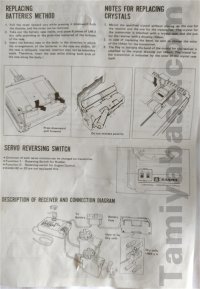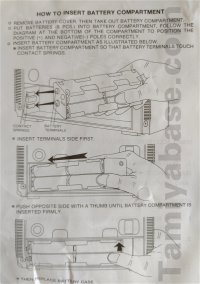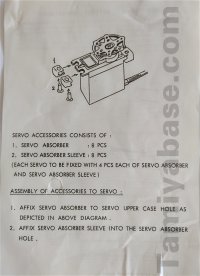Introduction
Vintage RC collectors get enthused about a lot of different radio gear: the Futaba FP-2TF steerwheel transmitter or its 2-stick relative in a similar beige metal box, the Futaba New Attack R, the Acoms Technidrive, and the earlier mk.i and mk.ii Techniplus models, the Hitech Ranger II, the blue, metal-cased MacGregors, and so on.
What’s best in the mind will depend on what you had first, what you aspired back in the day, even what you’ve come to respect more as time goes by.
Sanwa didn’t start as early as some manufacturers, but they made capable, tidy sets that are “best” to many. The brand is less well known though, and their fans don’t tend to be as rabid as Futaba or Acoms enthusiasts – which probably explains why I was able to get this boxed, barely fiddled with “Dash R2” set from eBay for 35 GBP recently.
A Little Brand Archaeology
Sanwa’s earliest vintage 2-channel stick transmitter was the GC2200, followed later by the “Dash” R2/S2/R3/S3 model. S means “standard” i.e., no servo reverse, “R” = servo reverse. The “2” means 2-channel, “3” has a lever third channel, operate by a lever on the top right of the case. There is no “Dash”, “1” or first model.
The Dash R2/S2/R3/S3 were all released at the same time, around 1983/84. The lack of any sort of BEC (receiver Battery Eliminator Circuitry) on the receiver, and no external BEC either, suggests it’s mid 1984 or earlier. The servo reversing switches on the transmitter suggests it’s no earlier than 1983. There is no date/year present on box, components, or paperwork.
Those models were followed by the Dash SP (servo reverse, also has BEC on the RX), and the much more modern Dash Saber and Dash Saber X.
There’s also a 2-ch steerwheel set, and multichannel set(s). Sanwa also made four & six channel sets for Airtronics.
Safety Warning
Essential to keeping the magic smoke contained within any Sanwa RC equipment – and any you might connect to it – is the knowledge that the positive negative connections are reversed in otherwise quite conventional servo plugs.
Box
The smaller size/shape of the transmitter doesn’t translate into a smaller box – it’s almost the same size as other makes of the period, no doubt to “educate and inform” potential buyers about it – a smaller box means inferior, no? Think about how long “new” CDs came in tall outer card boxes for the US market.
The Sanwa Dash R2 box is a decent looking affair, printed in black and silver grey.
Transmitter
This has angular design, very much like others of the period (first gen Futaba Attack, Acoms mk.iii, etc) moulded in black plastic. It’s a little narrower and deeper than alternatives from other manufacturers, making it feel more compact.
The sticks are made from aluminium, and the throttle has a 60/30 split for IC (internal combustion) engine operation. The reversing switches are easily accessible, on the lower left front of the case.
There’s a tubular chrome carrying handle, and a quite delicate looking lanyard connection – though I’ve no reason to doubt it’s adequate for the job.
The crystal is fitted to the rear of the case, which was a bit of an old feature for the time. There’s also a charging jack on the rear. The battery hatch is fiddlier than most & has a completely removable (no wires, only contacts) 8x AA battery holder.
It’s made in Singapore, which I found somewhat interesting – you usually see a Japan -> Taiwan -> China progression when manufacturers move production to chase lower costs.
Receiver
The RX has long (995mm) antenna, which feels like a bit of a hangover from a previous generation of radio gear, such as the mk.1 Acoms and the early Futaba FP-2GS.
There’s no identifying model number, but “AM 27 MHz”, “DASH” and “SANWA” are all moulded in on front. The design of the board and case suggests that the same basic unit (with additions/modifications) were used for up to six channel sets.
Note that the positive and negative pins are reversed, compared to most other brands.
4xAA Battery Holder
This is pretty generic but does have a larger switch than some. There’s also a nice red & black printed aluminium panel (still with its protective plastic in this example) that will, unfortunately, be too big for some Tamiya applications.
Servos
As per other sets of this era, two servos are included. The model number is SM-631, which have short looking (172mmlk) leads. The plugs look conventional but are also a little thicker with 3 distinct square ridges on one flat. They are also wired differently from most other brands – the positive and negative connections are reversed.
The pinout changed for the next generation of servo, (the signal wire got a white tracer), but for the SM-631 it’s:
Pin 1: Black, no tracer: signal
Pin 2: Black, no tracer: -ve
Pin 3: Black, red tracer: +ve
Manual
Conclusion
Good looking, compact and well featured, I can see why the early Sanwa Dash models have their fans. It hangs on to a couple of design features that went out with the previous generation of radio gear from other manufacturers, but these, and the slightly cheaper look and feel, don’t really detract from its useability.
Overall, Sanwa is a less popular brand, and despite the comparative rarity, translates into somewhat lower prices. In that regard, it’s very much like the Tamiya 58084 Pajero “wheelie” from 1984 – which would actually be a good match for a Dash R2 set.
__________________________
Written by TB member Jonny Retro



